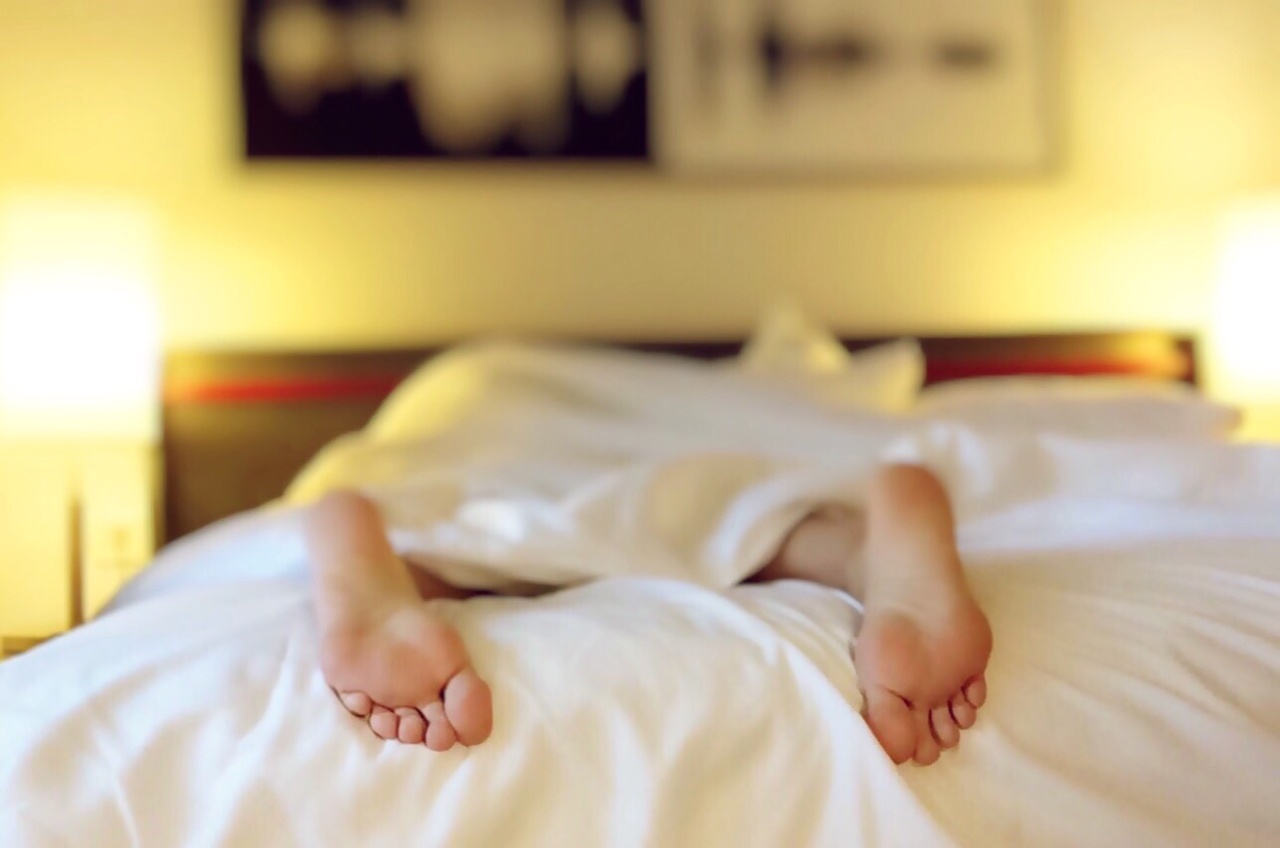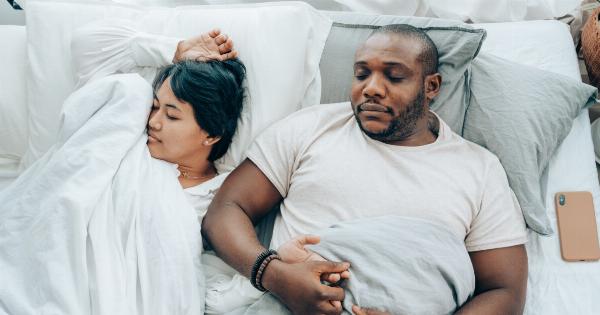Insomnia is a common sleep disorder that affects millions of people worldwide. It can significantly impact one’s quality of life, leading to daytime fatigue, mood disturbances, and difficulties with concentration and memory.
While there are various causes of insomnia, it’s often related to stress, anxiety, or an overactive mind.
Instead of relying on medication, there are several relaxation techniques that can help you get your ZZZs and overcome insomnia naturally.
In this article, we will explore three effective relaxation techniques that can promote restful sleep and help you wake up feeling refreshed and rejuvenated.
The 4-7-8 Breathing Technique
The 4-7-8 breathing technique is a simple yet powerful relaxation technique that focuses on regulating your breath. It can help calm the nervous system, reduce anxiety, and induce sleep. Here’s how you can practice the 4-7-8 breathing technique:.
- Find a comfortable position, either sitting or lying down.
- Close your eyes and take a deep breath in through your nose for a count of 4.
- Hold your breath for a count of 7.
- Exhale slowly through your mouth for a count of 8, making a gentle whoosh sound.
- Repeat this cycle three more times.
Practice the 4-7-8 breathing technique before bedtime or whenever you feel restless.
Over time, it can help regulate your breathing pattern and induce a state of deep relaxation, making it easier for you to fall asleep and stay asleep throughout the night.
Progressive Muscle Relaxation (PMR)
Progressive Muscle Relaxation (PMR) is a technique that involves tensing and relaxing different muscle groups in your body.
By systematically tensing and releasing each muscle group, you can release physical tension and promote overall relaxation, which can be especially helpful for individuals who struggle with musculoskeletal pain and discomfort that can disrupt sleep.
To practice PMR, follow these steps:.
- Find a quiet and comfortable space.
- Lie down or sit in a relaxed position.
- Start with your toes, tense the muscles for a count of 5, and then release.
- Move up to your calves, tense for a count of 5, and release.
- Continue this process with each muscle group, including your thighs, buttocks, abdomen, chest, arms, hands, neck, and face.
By progressively relaxing each muscle group, you can promote a state of deep relaxation and prepare your body for a restful night’s sleep.
Guided Imagery
Guided imagery is a technique that involves using your imagination to create calming and peaceful mental images.
By engaging your senses and focusing on positive imagery, you can divert your attention from racing thoughts and induce a state of relaxation conducive to sleep.
To practice guided imagery, follow these steps:.
- Find a quiet and comfortable space.
- Close your eyes and take a few deep breaths to relax your body and mind.
- Choose a peaceful and pleasant scene in your mind, such as a serene beach, a calming garden, or a tranquil forest.
- Visualize the scene in great detail, incorporating all your senses. Imagine the colors, sounds, smells, and textures.
- Focus on the peacefulness and tranquility of the scene, allowing yourself to become fully immersed in the experience.
- Continue this visualization for as long as you need to feel deeply relaxed.
Guided imagery can be particularly helpful for individuals who struggle with racing thoughts and mental chatter that can interfere with falling asleep.
By redirecting your focus to calming mental imagery, you can quiet your mind and promote a sense of peace and tranquility.
Create a Relaxing Bedtime Routine
In addition to these relaxation techniques, establishing a relaxing bedtime routine can significantly improve your sleep quality. A bedtime routine helps signal to your body and mind that it’s time to wind down and prepare for sleep.
Here are some tips to create a soothing bedtime routine:.
- Establish a consistent sleep schedule by going to bed and waking up at the same time every day, even on weekends.
- Avoid stimulating activities or screens, such as using electronic devices or watching TV, at least an hour before bedtime.
- Create a relaxing environment in your bedroom, including a comfortable mattress and pillows, soft and cozy bedding, and a cool and dark room.
- Engage in calming activities before bed, such as taking a warm bath, reading a book, practicing gentle stretching or yoga, or listening to soothing music.
- Avoid consuming caffeine, nicotine, or alcohol close to bedtime, as they can interfere with your sleep cycle.
By implementing a relaxing bedtime routine, you can signal to your body and mind that it’s time to unwind and prepare for a restful night’s sleep.
Conclusion
Insomnia can significantly impact your well-being and overall quality of life, but there are natural and effective ways to overcome it.
By incorporating relaxation techniques such as the 4-7-8 breathing technique, progressive muscle relaxation (PMR), and guided imagery into your routine, you can promote restful sleep and wake up feeling rejuvenated.
Remember to be patient and consistent when practicing these techniques. With time and regular practice, you can train your body and mind to relax, making it easier to fall asleep and stay asleep throughout the night.
Additionally, creating a relaxing bedtime routine can further enhance the quality of your sleep.
Prioritize your rest and give these relaxation techniques a try. Embrace the power of relaxation and reclaim your peaceful, restorative sleep.































